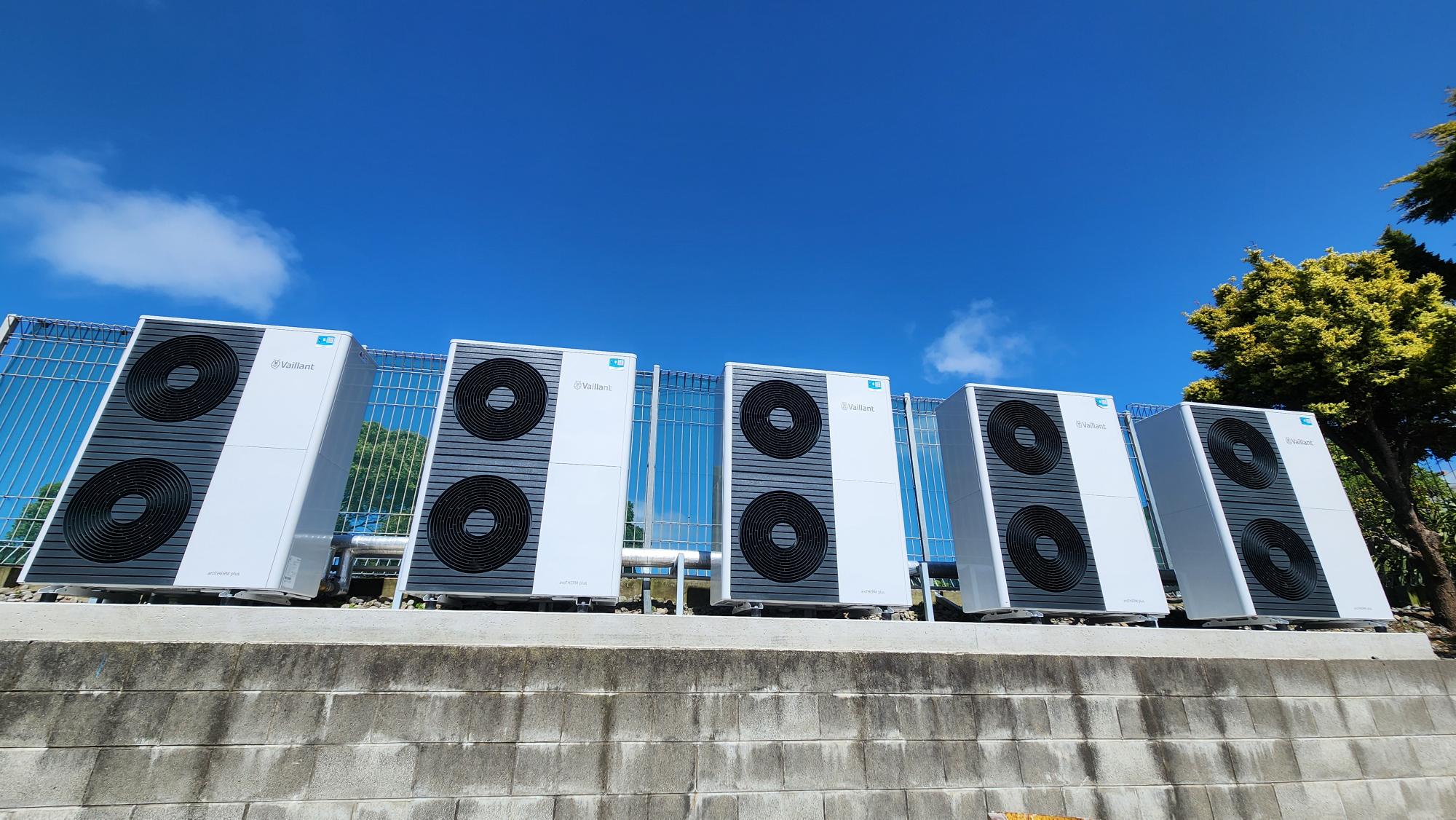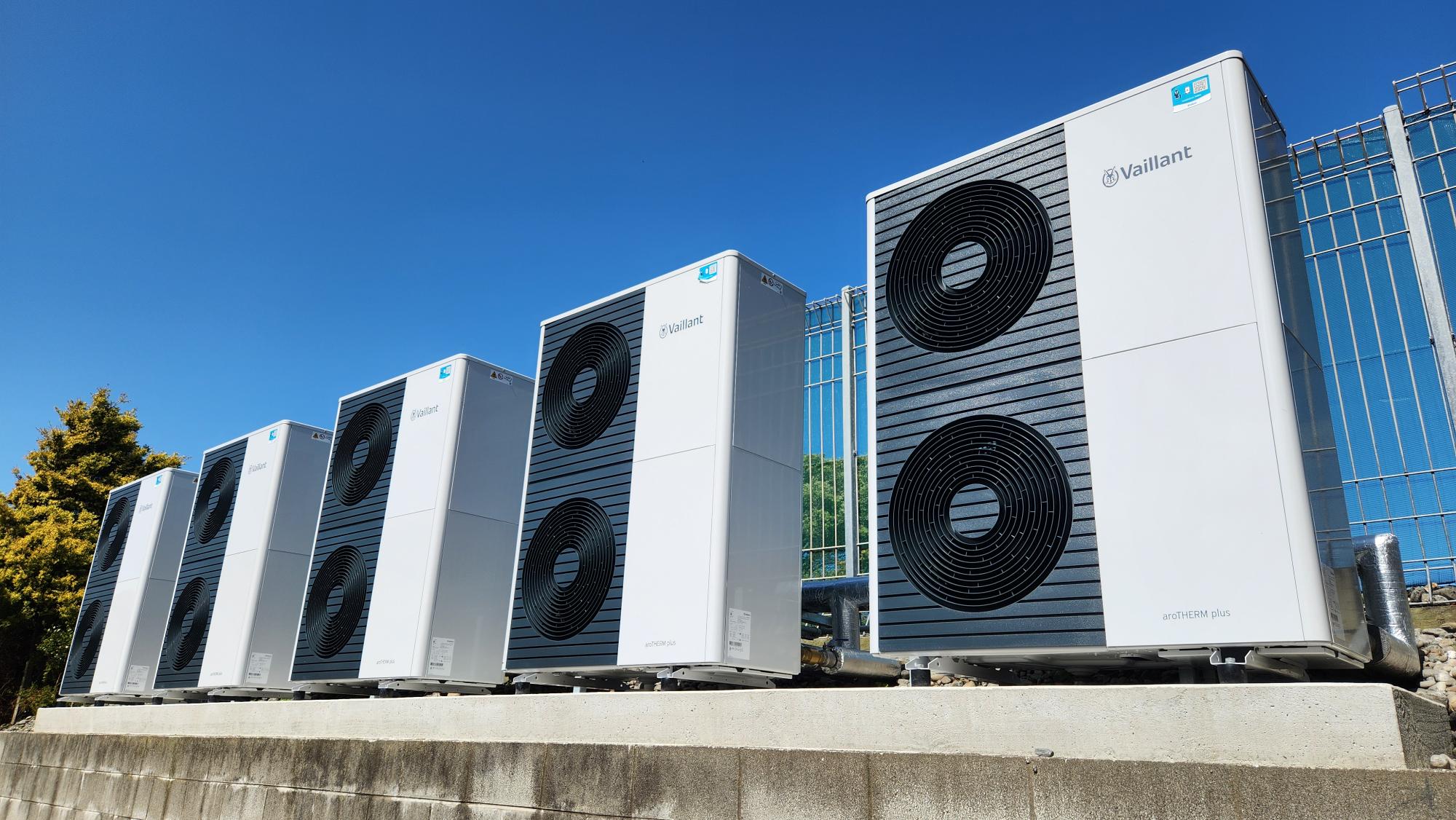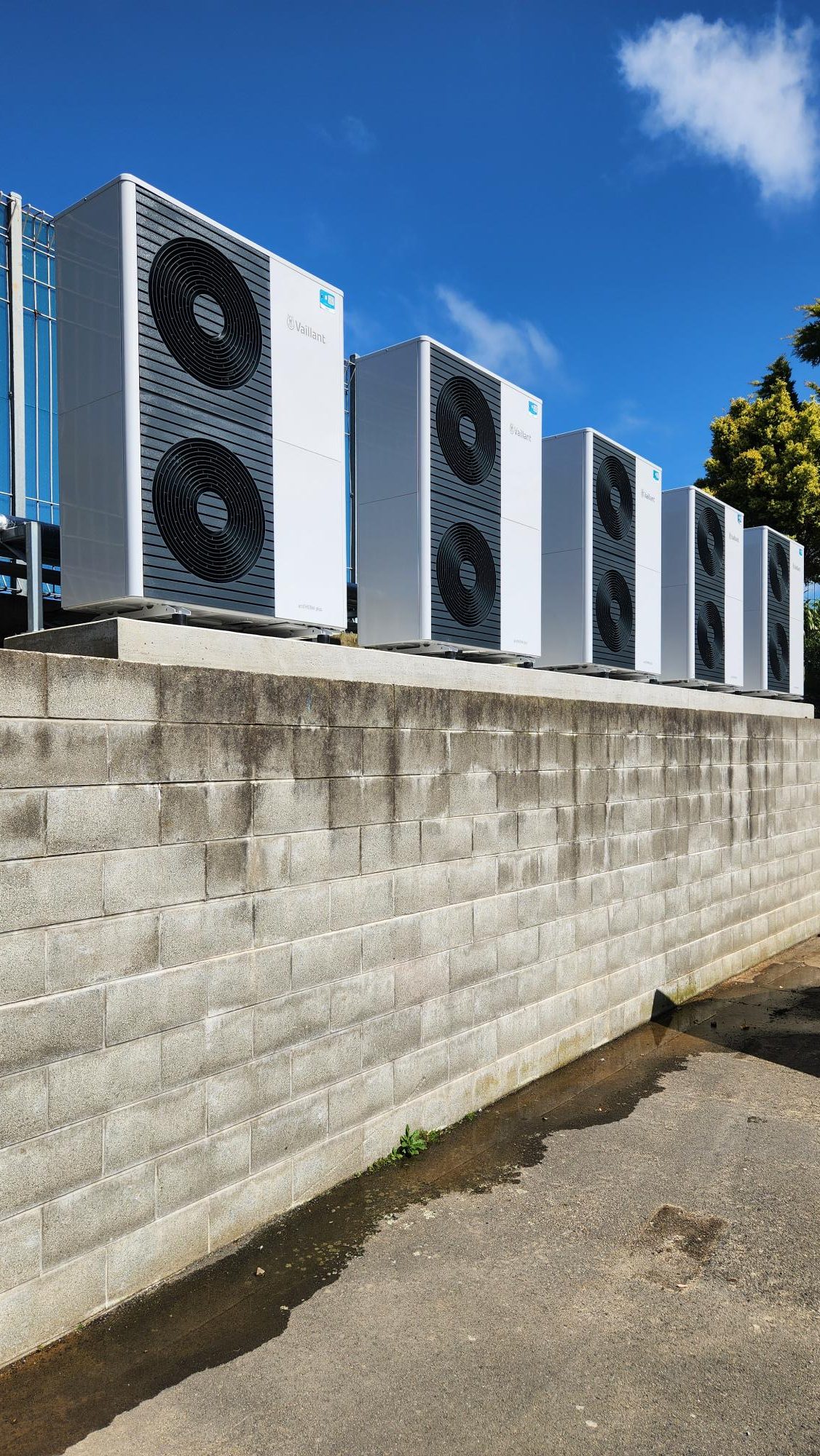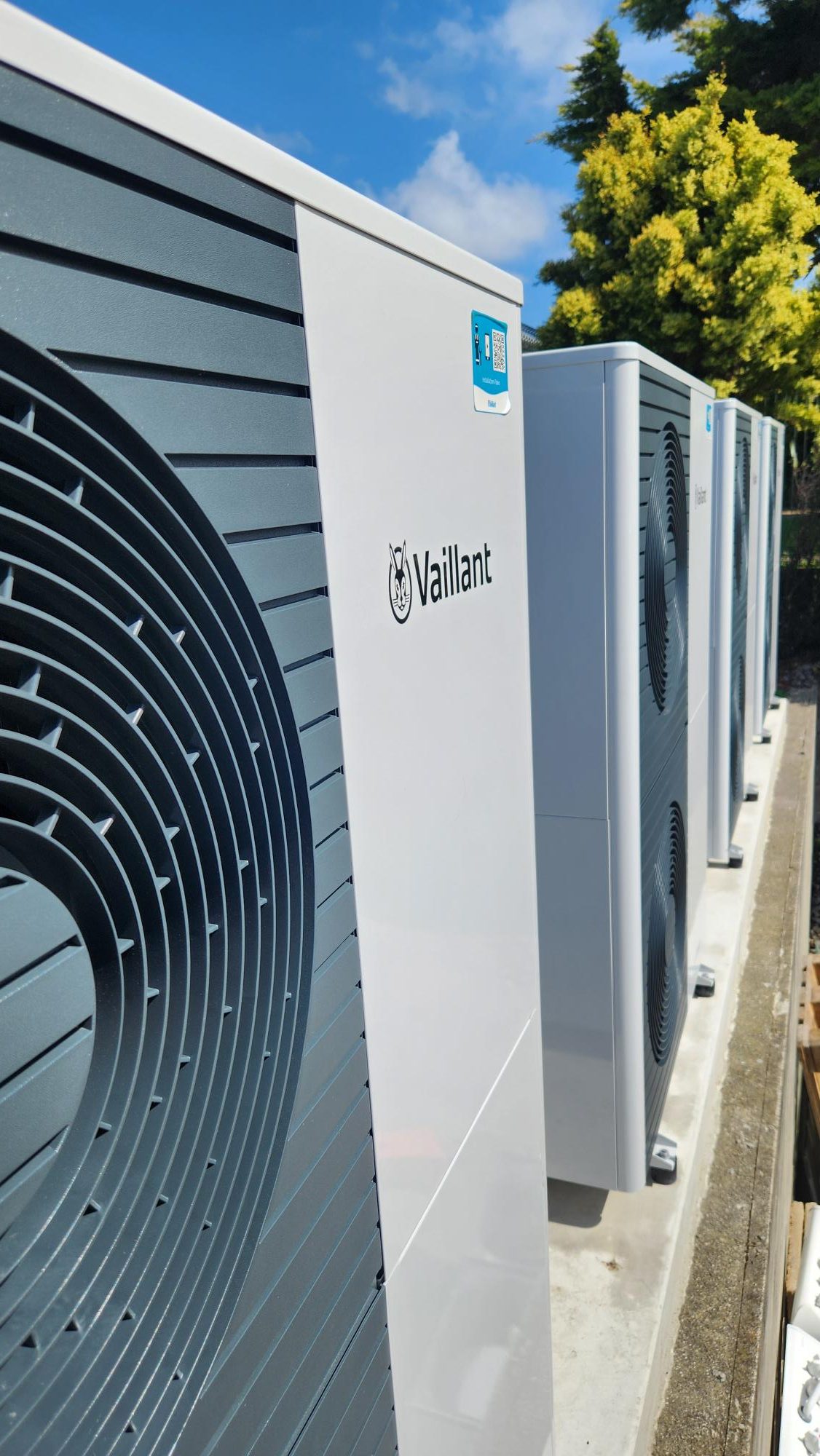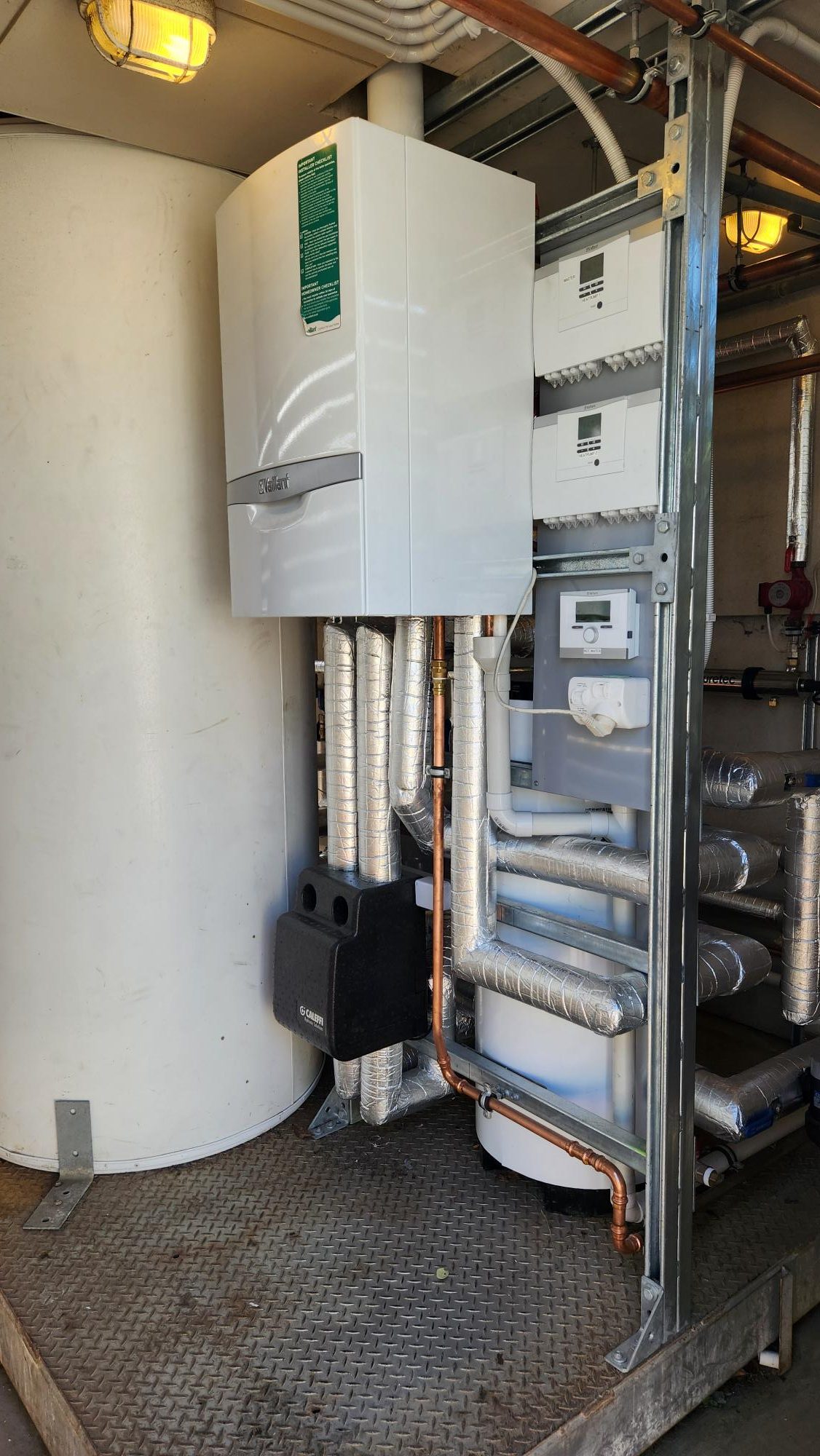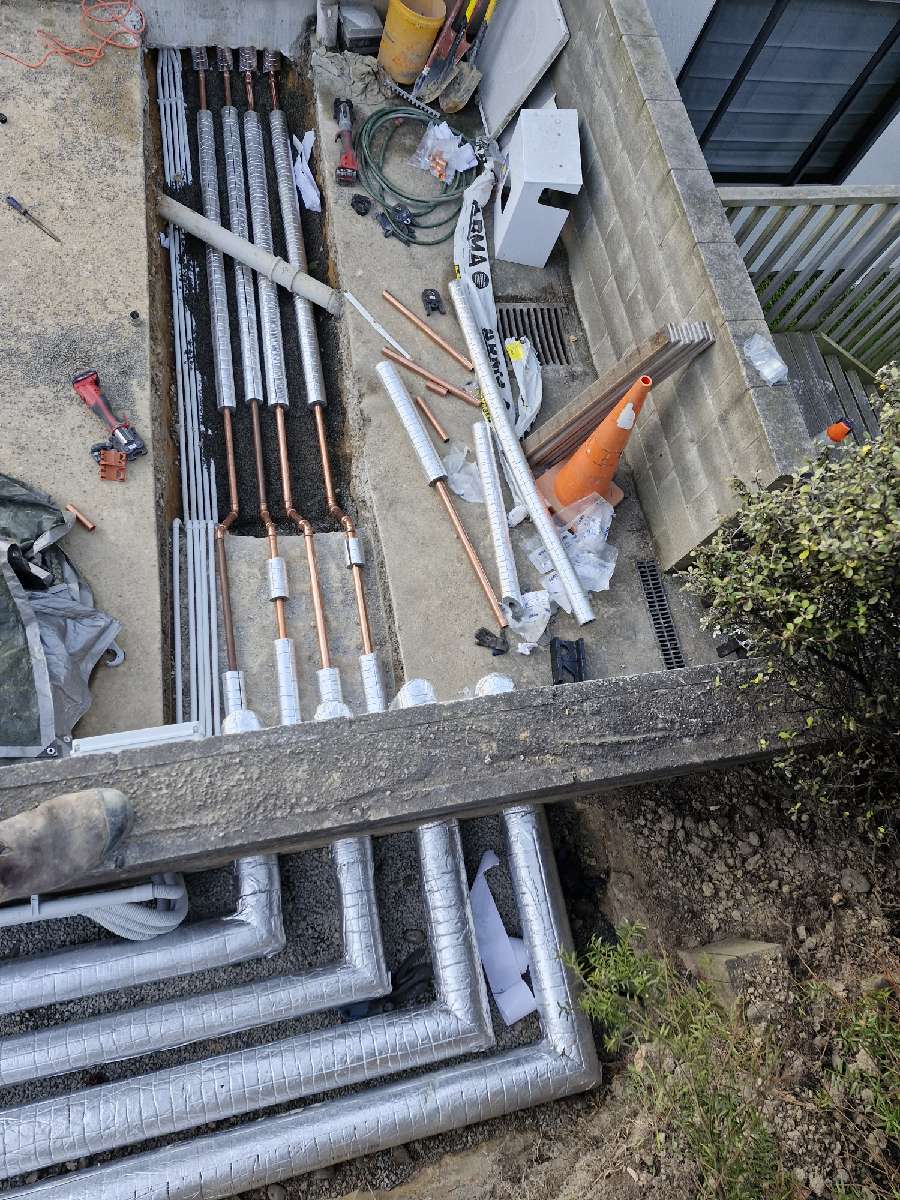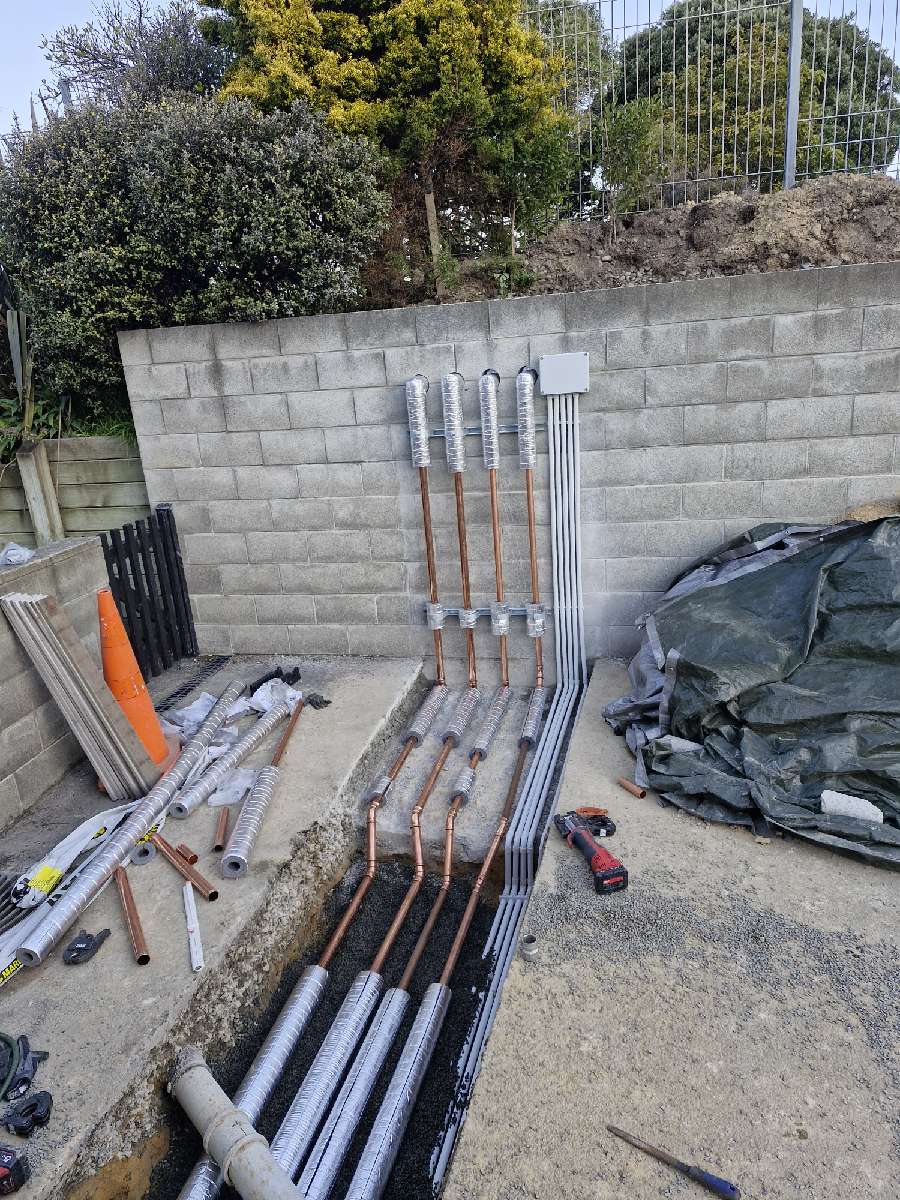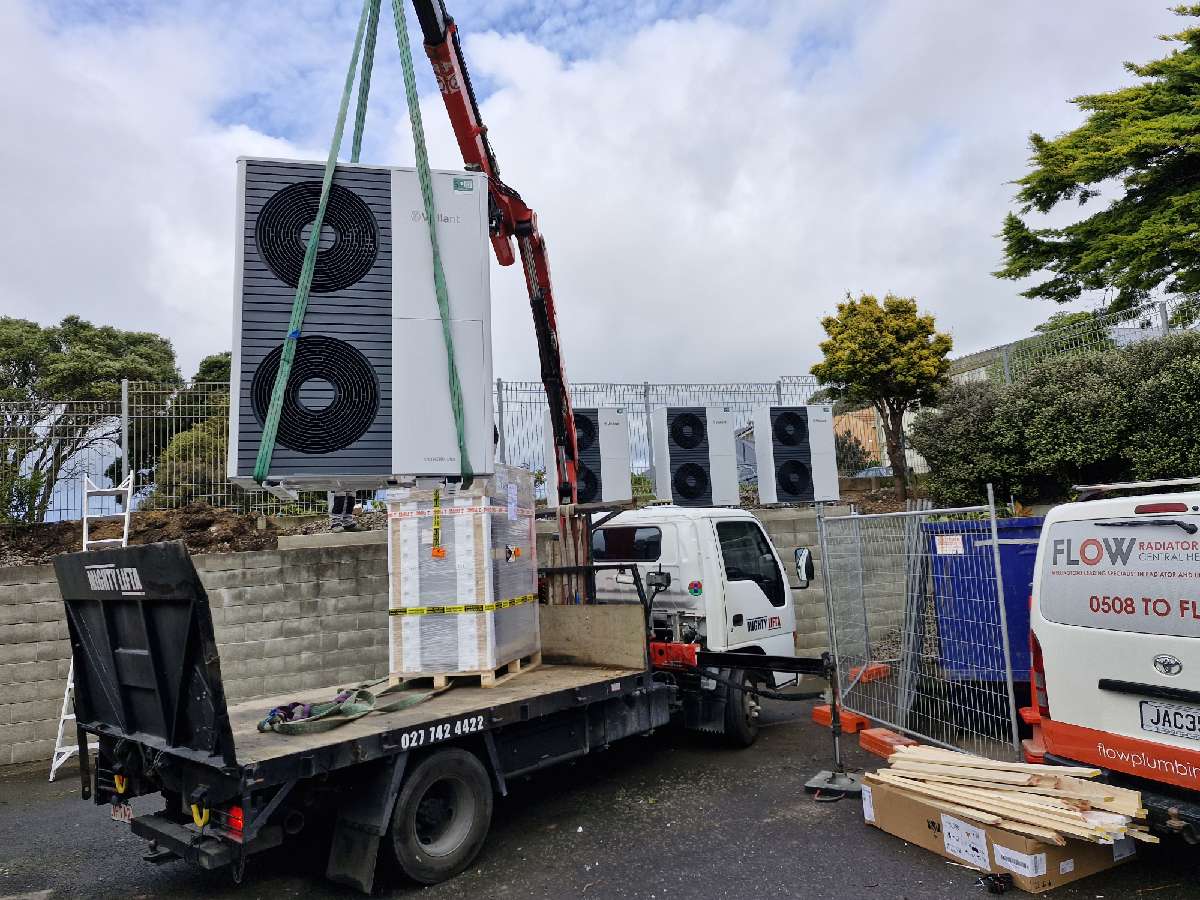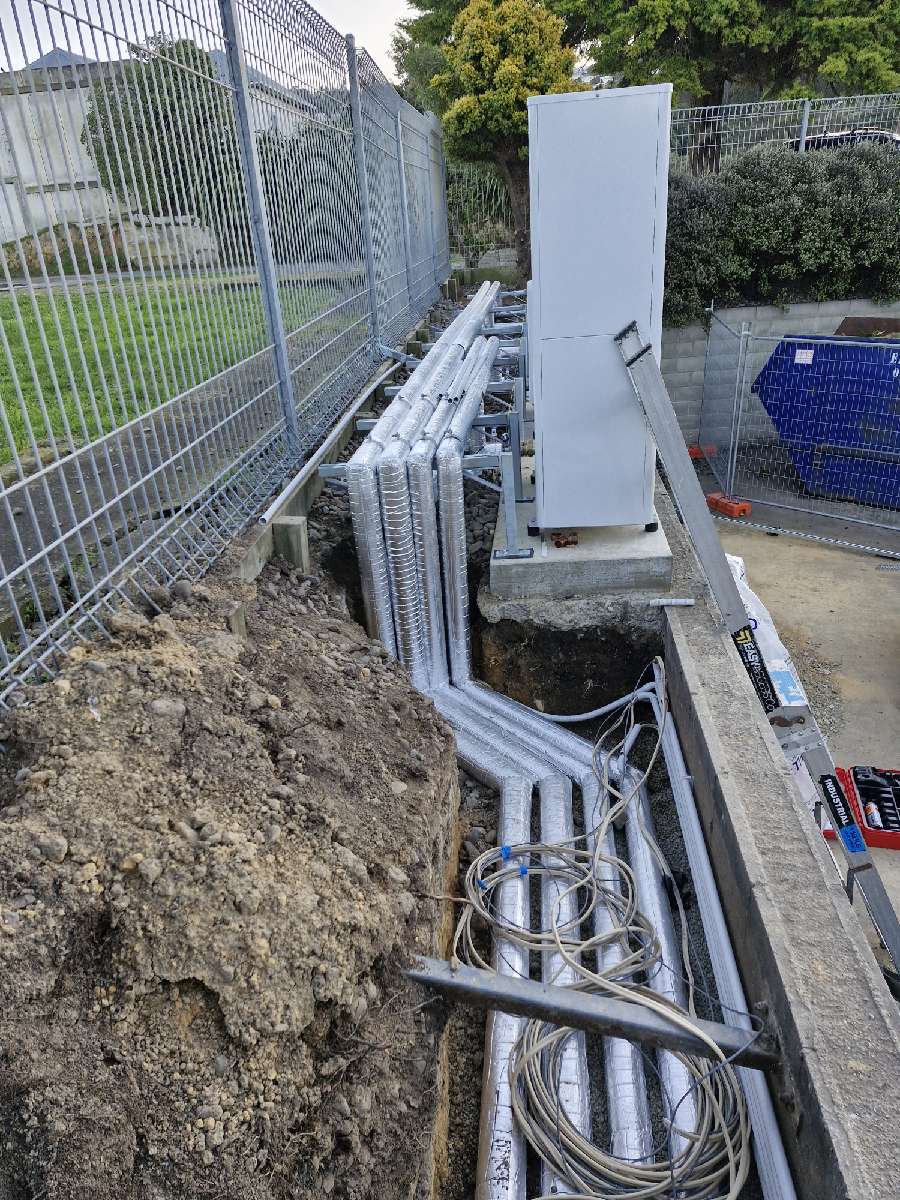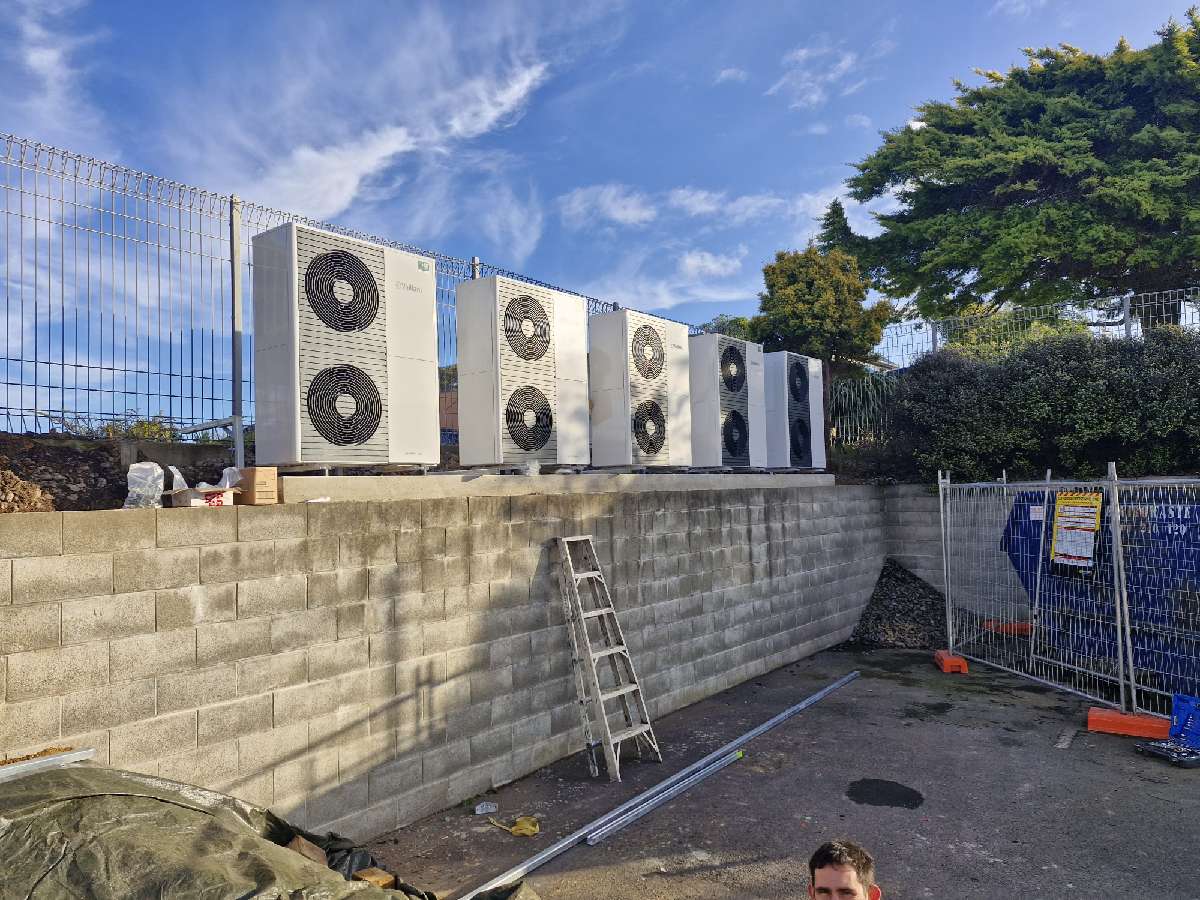Can you provide an overview of the solution provided for this project and what prompted this to come about?
We were contacted by the retirement village to investigate the heating and hot water not functioning correctly in one of their apartment blocks and rest home spanning over 3 floors.
The existing system comprised of two dated 80kW floor mounted natural draft boilers which operated on constant flow temperature, supplying heating for radiators throughout the building and also heating a 1000L cylinder for the domestic hot water production. Needless to say, the existing system was consuming large amounts of natural gas even when no demand was required.
We found one of the boilers to have completely failed and the second boiler was on its last legs, so a means of replacement was required. The retirement village was actively looking to reduce their carbon footprint and wanted a solution that would be environmentally friendly and reduce running costs.
There was not enough power supply available onsite to run a full electric system without upgrading the mains supply to the building, which would have come at a very high cost.
We proposed to split the building heating and hot water heating into two, using hybrid systems (Electricity & Natural Gas) using the current available power supply.
The building heating circuit consisted of 3 x 16kW Vaillant Arotherm Plus high temperature air-water heat pumps and a 60kW Vaillant Ecotec Plus gas condensing boiler with Vaillant weather compensating thermostat controls.
The domestic hot water circuit consists of 2 x 16kW Vaillant Arotherm Plus high temperature air-water heat pumps and a 37kW Vaillant Ecotec Plus gas condensing boiler.
What specific features does the solution offer?
The new hybrid system uses weather compensation on the building heating circuit meaning it only puts in enough heat into the building as what is required due to the external air temperature. This ensures that the residents are more comfortable with an even, constant temperature and prevents the building overheating as well as reducing running costs.
The systems are primarily heated with electric air-water heat pumps and the gas boilers only ever turn on if the peak demand is too high or the ambient air temperature drops extremely low. We have set the system up so that if the ambient temperature is too low it becomes more efficient to operate the gas boilers than the heat pumps. Over the two months of monitoring the system, the gas boilers have only made up 10% of the total energy usage and the air-water heat pumps making up the other 90%.
The new hybrid system also offers multi levels of redundancy along with sharing the load across multiple appliances prolonging the life of the system and reducing disruption if a heat source were to fault.
Were there any challenges faced during the implementation process? How were they addressed?
The biggest challenge we faced was keeping the heating & hot water operational throughout the duration of the project with minimal disruption as it was not feasible or practical to relocate the residents during this time. This challenge was overcome by setting up temporary boilers enabling us to remove the old boilers and strip out the plant room to give us a blank canvas to install the new plant and equipment. Once the new plant was in place and piping installed, we were able to complete the changeover in a couple of hours.
What features of the solution are most beneficial for the customer?
The reduced running costs, reduced maintenance costs, and the significant reduction in their carbon footprint – based on the previous two months of operation data, we are forecasting a $30K reduction in running cost and natural gas usage per annum.
How did you find working with Waterware to complete the process?
Waterware have been great to deal with from the start, from providing design schematics to assuring all the product was delivered to site on time and providing technical support throughout the project.
What has the general feedback been from the customer?
The customer is very happy with the end result, the smooth process, minimal disruption in workmanship and the product quality. They were initially concerned about how much noise the heat pumps would make but were very surprised at how quiet the Vaillant heat pumps are.
Do you have any comments on ways to improve the proceess next time?
No, all went exactly to plan “preparation is the key to success”.






